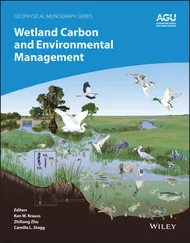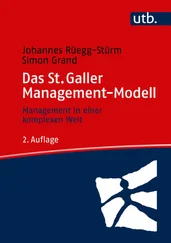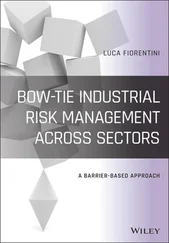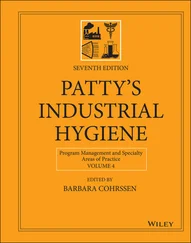India's rivers and streams suffer from high levels of pollution from waste generated primarily from industrial processes and municipal activities. Untreated sewage and nonindustrial wastes account for four times as much pollution as industrial effluents. While it is estimated that 75% of the wastewater generated is from municipal sources, industrial waste from large‐ and medium‐sized plants contributes to over 50% of the total pollution loads. In major cities, less than 5% of the total waste is collected and less than 25% of this treated.
To address these environmental challenges in coordination with the state governments, the central government has identified and targeted 17 highly polluting industries and 24 environmental problem areas. The chemical and engineering industries are at the top of the government's list since they are the major contributors to air, water, and waste pollution. These industries include integrated iron and steel plants, nonferrous metallurgical units, pharmaceutical and petrochemical complexes, fertilizers and pesticide plants, thermal power plants, textiles, pulp and paper, tanneries, and chloralkali units.
The Government of India has established an environmental legal and institutional system to meet these challenges within the overall framework of India's development agenda and international principles and norms. Recently, the Government put forward the National Environment Policy which provides a guide to action in regulatory reform, environmental conservation, and enactment of legislation by government agencies at all levels.
The Basic Environmental Law is the basic structure of Japan's environmental policies replacing the Basic Law for Environmental Pollution Control and the Nature Conservation Law. The updated law aims to address “global environmental problems, urban pollution by everyday life, loss of accessible natural environment in urban areas and degrading environmental protection capacity in forests and farmlands” (Govt. of Japan and Ministry of the Environment 1967).
The three basic environmental principles that the Basic Environmental Law follows are “the blessings of the environment should be enjoyed by the present generation and succeeded to the future generations, a sustainable society should be created where environmental loads by human activities are minimized, and Japan should contribute actively to global environmental conservation through international cooperation.” From these principles, the Japanese government have established policies such as “environmental consideration in policy formulation, establishment of the Basic Environment Plan which describes the directions of long‐term environmental policy, environmental impact assessment for development projects, economic measures to encourage activities for reducing environmental load, improvement of social infrastructure such as sewerage system, transport facilities etc., promotion of environmental activities by corporations, citizens and NGOs, environmental education, and provision of information, promotion of science and technology” (Govt. of Japan, Ministry of the Environment 1967).
The Ministry for the Environment and Office of the Parliamentary Commissioner for the Environment were established by the Environment Act 1986. These positions are responsible for advising the Minister on all areas of environmental legislation. A common theme of New Zealand's environmental legislation is sustainably managing natural and physical resources, fisheries, and forests. The Resource Management Act 1991 is the main piece of environmental legislation that outlines the government's strategy to managing the “environment, including air, water soil, biodiversity, the coastal environment, noise, subdivision, and land use planning in general” (Govt. of New Zealand, Environmental Act 1986; Wells 1984).
The Ministry of Natural Resources and Environment of the Russian Federation makes regulation regarding “conservation of natural resources, including the subsoil, water bodies, forests located in designated conservation areas, fauna and their habitat, in the field of hunting, hydrometeorology and related areas, environmental monitoring and pollution control, including radiation monitoring and control, and functions of public environmental policy making and implementation and statutory regulation” (Ministry of Natural Resources and Environment of the Russian Federation 1986).
South African environmental law describes the legal rules in South Africa relating to the social, economic, philosophical, and jurisprudential issues raised by attempts to protect and conserve the environment in South Africa. South African environmental law encompasses natural resource conservation and utilization, as well as land‐use planning and development. Issues of enforcement are also considered, together with the international dimension, which has shaped much of the direction of environmental law in South Africa. The role of the country's Constitution, crucial to any understanding of the application of environmental law, also is examined. The National Environmental Management Act provides the underlying framework for environmental law (South African National Environmental Management Act 1998).
United Kingdom environmental law concerns the protection of the environment in the United Kingdom. Environmental law is increasingly a European and an international issue, due to the cross‐border issues of air and water pollution, and man‐made climate change.
In the common law, the primary protection was found in the law of nuisance, but this only allowed for private actions for damages or injunctions if there was harm to land. Thus, smells emanating from pig sties ( Aldred's Case 1610), strict liability against dumping rubbish ( R v. Stephens 1866), or damage from exploding dams ( Rylands v. Fletcher 1898). Private enforcement, however, was limited and found to be woefully inadequate to deal with major environmental threats, particularly threats to common resources.
1306, Edward I briefly banned coal fires in London.
John Evelyn, Fumifugium (1661) argued for burning fragrant wood instead of mineral coal, which he believed would reduce coughing.
Ballad of Gresham College (1661) describes how the smoke “does our lungs and spirits choke, Our hanging spoil, and rust our iron.”
In 1800, 1 million T of coal were burned in London, and 15 million across the United Kingdom.
Smoke Nuisance Abatement (Metropolis) Act 1853.
John Snow in 1854 discovered that the water pump on Broad Street, Soho, was responsible for 616 cholera deaths because it was contaminated by an old cesspit leaking fecal bacteria. Germ theory of disease began to replace miasma theory that had lingered since the Black Death.
During the “Great Stink” of 1858, the dumping of sewerage into the River Thames began to smell so ghastly in the summer heat that Parliament had to be evacuated. Ironically, the Metropolitan Commission of Sewers Act 1848 had allowed the Metropolitan Commission for Sewers to close cesspits around the city in an attempt to “clean up,” but this simply led people to pollute the river. In 19 days, Parliament passed a further Act to build the London sewerage system.
Alkali Act 1863 and Alkali Act 1874, amended 1906
WS Jevons, The Coal Question; An Inquiry Concerning the Progress of the Nation, and the Probable Exhaustion of Our Coal Mines (1865)
Ground Game Act 1880, Night Poaching Act 1828, Game Act 1831, game preservation
James Johnston (socialist politician), president of the Smoke Abatement League, international conference in 1911
Читать дальше












